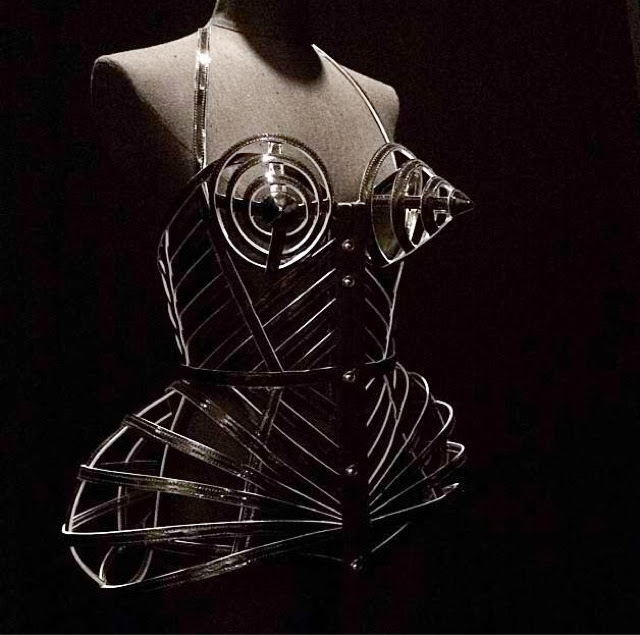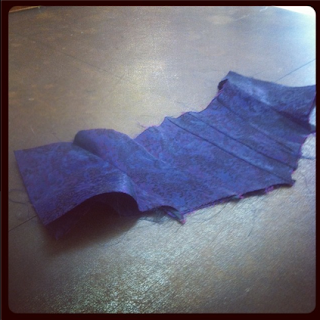Thursday, December 19, 2013
Tuesday, December 10, 2013
Sunday, December 8, 2013
Friday, December 6, 2013
Metal Corsets in the 16th century
Metal corset (also known as iron corset) is historical type of corset made mostly or entirely out of metal, usually iron.
By the start of the 16th century, Spanish fashions influenced Italian and English ladies. An iron hinged armour like corset was worn to flatten the body giving a smooth outline beneath gowns.
The iron corset must have been exceptionally uncomfortable and heavy to wear and could only have been worn by Elizabethan ladies not doing any form of heavy work. Their only benefit seems to be that they produced the incredibly small waisted, elongated flat chested smooth line torso.
This was illustrated in paintings of great Elizabethan ladies wearing fabulous structured bejewelled gowns. Left - Elongated boyish flattened torso of Queen Elizabeth 1 in the long Elizabethan era - 1592/3. Held at National Portrait Gallery London.
Corsets of the late 16th century would be more recognizable to us today than the iron version. These later corsets incorporated materials such as whalebone, bone, wood and flexible steel. The patterns on the corsets showed the placement of the chosen support and were elongated after a fashion trend set by the boyish figure of Queen Elizabeth I.[1]
Due to large amount of metal used, such corsets were heavy and more uncomfortable than ordinary fabric corsets. They were also padded underneath like armour. The metal corsets also worked like a bulletproof vest, because assassinations by knife attacks were a common risk at the time.
Some sources attribute the introduction of the iron corset to Catherine de Medici, wife of Henry II of France (1579–1589). It was said that she frowned upon anyone having a thick waist and introduced a rigid hardened stiff corset as well as the iron corset. Other sources believe that the 'iron' corset was only intended for remedial wear or for women with physical deformities.
Tuesday, December 3, 2013
Constructing and Beading An Underbust corset named Emma
Emma
pieced together under bust without bone channels
Hand Basted final bone channel
A few bead layouts to be added
Close Up on Gems
Monday, December 2, 2013
Sunday, December 1, 2013
A Closer look at the Camille corset, a LoveMe Tye original


Camille was inspired by the corsets of the late 1700s and incorporates all over boned channels staying true to that period. The face fabric is Coutil that was backed with jacket inner facing and lined with 100% cotton which can support the metal bones placed between the layers of fabric. The detailing stays true to this vintage design by purposely placed paper between each bone channel stitched in placed for an antique and aged feel. Camille has all over boning and pipped seams like Brenna Corset but is shorter in the front coming just a few inches below the waist for a more modern on the go girl. The Camille looks great with high waisted jeans and under a cropped top. I wear the Camille to work because it's comfortable and I don't have to worry about the unlacing process to use the restroom!
Choosing the frontal shape of your corset to flatter your bust shape
Straight: A-B cup - for the smaller bust (see example to the left)
Sweetheart: Medium to large bust
Plunge/Scoop: Bustier ladies - DD cups and over
Sweetheart: Medium to large bust
Plunge/Scoop: Bustier ladies - DD cups and over
Saturday, November 30, 2013
Subscribe to:
Posts (Atom)



















































